I’ve never had a manicured lawn. I like the hodgepodge of interesting flowers that pop up in my yard starting with the trout lily in late winter to the golden rod that ushers in autumn. Plus, manicured lawns are bad for our rivers and streams and, in many ways, just plain stupid.
Most of my favorites are native plants that have evolved alongside native Arkansas pollinators. But I’ve grown fond of one invasive in particular despite the fact that so many try to demonize their very existence. I love its velvety golden petals that feed my neighbor’s honeybees, and I love its downy puff balls that transport me back to a simpler time. What’s not to love about dandelions?
But dandelions are the coyotes of the designer-lawn world. They’re the preferred villain in herbicide commercials and lawn professionals rank them as public enemy #1. They’re assaulted on all sides by a campaign geared toward their extermination. But no matter what measures are employed, they just come back stronger. You’ve got to admire that kind of pluck in a plant.
As ultimate survivors, they don’t even need a partner to reproduce. One plant has both male and female equipment, and the process they use for seed dispersal is genius. No telling how many yards have been seeded by seven-year-old kids making wishes. It’s not just seed dispersal that’s impressive. When the seed germinates, it shoots down a taproot. The taproot can be up to ten inches long, twisted, and brittle as dry twig. Most attempts at root removal will result in a broken root and guess what? A broken root leads to more dandelions.
Dandelions aren’t going away so instead of trying to fight them I say embrace them.
More Like This
The hardy plant is found on every continent, transplanted to many locales to help feed honeybees, but what is really amazing about the dandelion is that it ranks as one of the most nutritious plants on Earth. Besides being low in saturated fat and very low in cholesterol, it’s also a good source of folate, magnesium, phosphorus and copper, dietary fiber, vitamin A, vitamin C, vitamin E, vitamin K, thiamin, riboflavin, vitamin B6, calcium, iron, potassium, and manganese. It’s a powerhouse of goodness, and it’s likely growing — for free — in your yard right now.
You can eat almost every part of the plant. The leaves are a vibrant green and have deep notches, which is where the dandelion got its name. “Dent-de-lion” are Old French words that mean “lions tooth.” The leaves can be eaten like any other greens either cooked or raw. The flowers can be battered and fried as fritters. The roots can be boiled like carrots or battered and fried.
One spring Saturday a few years back, I decided our family would try eating dandelions. My daughters were thrilled as I told them that weekend plans included squatting and digging in our front yard. But after more than a few complaints, they caught the spirit and seemed to enjoy it. We cleaned the dandelions along with some wild onions we found in the yard, and I instructed the girls to cut them up and separate the parts. One bowl was for the flowers, one for roots, and one for the greens. We then moved the greens and the onions to a skillet.
I sautéed the onions and greens in olive oil along with a little salt and garlic. When the greens went limp I pronounced them done. And you know what? They were pretty good. They were a little bitter for the girls, but I liked them. I suggest serving them as a side dish maybe with scrambled eggs. Combining them with spaghetti noodles and cheese sounds good too. I’m sure I’ll come up with some more combinations as well.
We boiled the dandelion roots with some carrots and I really couldn’t tell much difference in taste between the two. Raw flowers have a faintly sweet taste and a pleasant texture, but I still haven’t tried flower fritters. Maybe I can get the granddaughter to pick a few next weekend and then who knows? I might kiss the mower goodbye and convert my whole front yard into a dandelion garden.




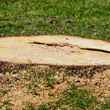
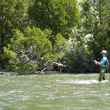
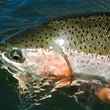




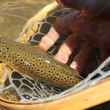
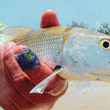



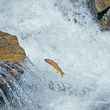
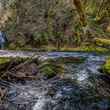



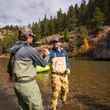




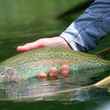



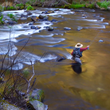
Comments
Kevin replied on Permalink
Try crisping the greens up by cooking them in some brown butter, and then roll them into some linguine with some parmesan.
Kevin replied on Permalink
Did I say linguine? I meant fettuccine.
Steve replied on Permalink
That can work pretty well in rural areas, but here is suburbia, having a front lawn full of dandelions is not very neigborly - - akin to boarding a plane when you've got the flu.
If you can put a giant net over you property to keep all the seeds from blowing into adjacent yards, great. If not, then all you've done is p*ss off your neighbors, who will try to compensate with even more herbicides on their own properties.
Nancy replied on Permalink
I agree 100% and have been arguing in favour of dandelions for years
Bruce Pitz replied on Permalink
In my youth, I was drawn to a brew my Dad made from dandelions; dandelion wine. During my high school career, a few of my buddies and I, (on several occasions), tested the viscosity of the mighty potion in an effort to console the fact we were not yet able to purchase beer…Not bright, but effective. Given some forty-five years to consider those days I can now emphatically state that eating dandelions is far, far better than drinking them!
Pages